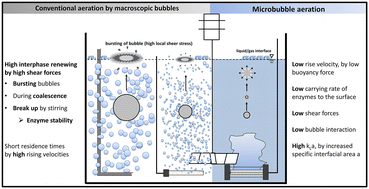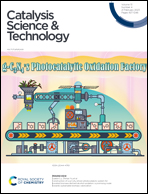Enhanced enzyme stability and gas utilization by microbubble aeration applying microporous aerators†
Abstract
During the optimization of processes in biocatalysis, the limitations of mass transfer and enzyme stability have to be overcome. To achieve these goals, aeration with microbubbles is advantageous by providing favorable properties, which include high gas utility, low-pressure drop, and reduced foam formation. In this study, the influences of microbubble, classic sub-millibubble and macrobubble aeration on enzyme stability and gas utility are compared. Using five enzymes, the half-life was investigated by comparing the microbubble aeration with a 2 μm porous sintered frit to the macrobubble aeration with a 5 mm open pipe, both adjusted to provide a constant kLa of 160 h−1. Furthermore, the half-life of a glucose oxidase was investigated by variation of the kLa in the range of 40 to 350 h−1 and the mode of the aeration system comparing the 2 μm and 10 μm sintered frit as well as the 5 mm open pipe. In both experimental set-ups, it was demonstrated that the aeration with microbubbles using the 2 μm sintered frit was beneficial for reaching high levels of enzyme stability. From this, we discovered that the interfacial area renewal rate plays an important role in the process of enzyme deactivation, which changes depending on the aeration mode.



 Please wait while we load your content...
Please wait while we load your content...